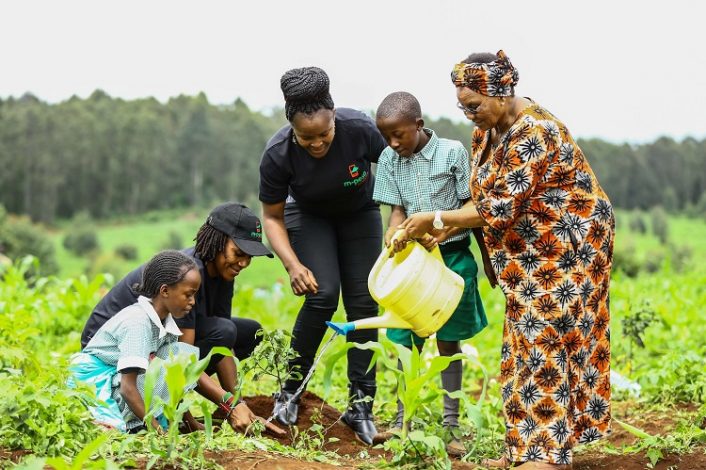
The draft policy says Kenya’s forest cover is 7.4 per cent, a far cry from the constitutional requirement of 10 per cent.
The government has however committed to increasing the cover to 10 per cent by 2022, a move that needs Sh48 billion. Some 2 billion trees will be planted.
Most people do tree planting for Public Relations or Corporate Social Responsibility purposes but the actual work is after planting the tree. It’s one thing to plant a tree, it’s another to grow a forest.
Growing trees takes a lot of concerted efforts, resources, commitment and diligence in aftercare.
How many corporates have you seen doing a follow up after a tree-planting campaign? For corporates to walk the talk, there is a need to make bold decisions. There is a need to put in place apt reporting frameworks to ensure progress is tracked accordingly.
What $34Mn Project Can do to Tackle Effects of Climate Change in Kenya
If we are to get Kenya to the needed 10% forest cover is a need for strong partnerships. Working with Community Forest Associations is one of the best ways of achieving our goal of ten per cent forest cover in Kenya. More investment from private institutions and the government is required to enhance the capacity of communities engaged in forest restoration activities.
Kenya continues to lose about 12,000 hectares of forests each year through deforestation. Accordingly, the 12% of the land area originally covered by closed-canopy forests is dwindling fast. There is a need to arrest this, despite the demand for fuelwood, charcoal and other wood products, and irrespective of the pressure for settlements, agriculture, and infrastructure expansion.
No matter how difficult it is, the reality is we urgently need to find a balance between development or conservation. One cannot exist without the other and we need to find the solutions to this conundrum Now.
We have to recognise that combating climate change without slowing deforestation is a lost cause. Climate change affects the growth, composition, and regeneration capacity of forests, resulting in reduced biodiversity and capacity to deliver important forest goods and services. Sustainably managed forests can play an important role in both mitigation and adaptation to climate change, and towards green growth.
Frequent droughts and floods in Kenya can partly be blamed on widespread deforestation in the country. Forests are needed to build resilience in the natural ecosystem. They are a buffer against extreme floods and droughts. Trees not only moderate climate, but act as water reservoirs, sources of medicine, and habitats for wildlife which earn countries like Kenya millions of dollars in foreign exchange through tourism.
We all have a responsibility towards addressing climate change impacts and public concerns regarding the protection, conservation and sustainable management of forest resources. Let’s work towards that.
Jacob Kumenda, Consumer Rights Advocate




